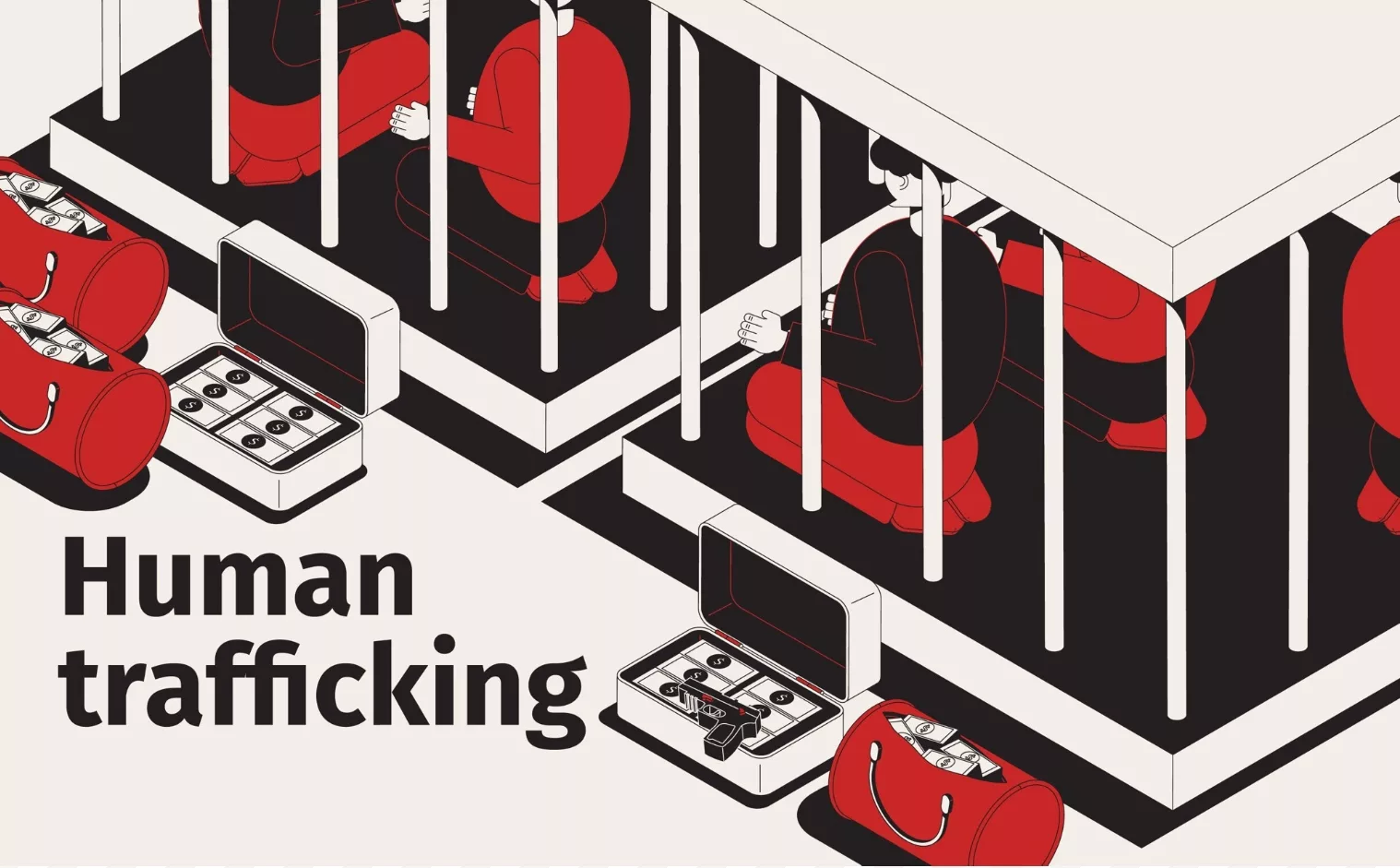Confronting human trafficking and forced labor in the global supply chain

Image by macrovector via Freepik
Much has been made of COVID-19’s impact on global supply chain performance and awareness over the past two years. Over time, this disruption has led organizations to constantly evaluate their supply chain performance in search of greater optimization.
Unfortunately, increased supply chain attention has not yet led to more scrutiny around one of the most disheartening effects of globalization: human trafficking and forced labor. Common examples of trafficking can include trafficking for forced labor, trafficking for forced criminal activities, trafficking of women and children for sexual exploitation, trafficking for the removal of organs, and people smuggling. Forced labor takes many forms, but includes labor that is forced due to indebtedness, which is very common in supply chain branches that rely on migrant labor.
It may seem like these practices could never occur on a well-meaning company’s watch. But that is simply not the reality. As sourcing has gone global and efficiency has become a top priority, companies all over the world have — knowingly or unknowingly — had this practice occurring in their supply chains.
While human trafficking and forced labor often take place in emerging or frontier markets — where due to price point, sourcing of products is most prevalent — the trafficking of persons and forced labor can also happen in “consuming” or developed markets. If business leaders want to prioritize sustainability in their supply chains, they would be wise to consider the following strategies to prevent both of these issues.
Take a Stance
Before taking any action on human trafficking or forced labor, organizations must first look inward. As a company, do you want to be a leader? Or would you settle for just not being in the headlines? Once company leaders set a direction, sustainability specialists can help with benchmarking against competitors and other relevant companies, as well as local legal requirements in the geographies in which the organization is present. This background research helps develop the essential materials of this stage: codes of conduct for employees and suppliers.
Every company should have a written stance on human trafficking and forced labor, complete with explicit terms of which practices they will and won’t tolerate from workers and business partners. This can be a succinct reference document, but it must set expectations properly for suppliers, consultants and more. Implementation guidance for the code of conduct is also key, to spell out clearly what the aspects of the code mean and how good practice looks in real-life settings.
The importance of the language in these materials cannot be overstated, given the reputational damage of not following through on public commitments. Consider hiring an expert to ensure that your code of conduct is well-vetted, appropriately specific, and properly translated into the languages of all relevant workers and suppliers.
Raise Awareness Through Training
Setting company guidelines around labor abuse is key, but no amount of regulation can help unless the expectations are followed at every level. As such, businesses should develop level-appropriate training that covers what various employees should watch for and guidelines for how to report it. Key audiences for training around human trafficking and forced labor include:
- Suppliers + Business Partners: However your company organizes its logistics, human trafficking and forced labor training should be present at every link of the supply chain. That often means developing tips for factory managers and floor workers of suppliers, alerting them to the signs of human trafficking and forced labor. This category of training should also include any partnered recruitment or temp agencies, at which issues with indebted labor are frequently present.
- Company Employees: In a perfect world, every employee can act as another set of eyes and ears, keeping watch for suspicious behavior. When everyone keeps watch, it can supplement the auditing required to monitor that required practices are being followed throughout the business. Typically, this kind of training explains how human trafficking most often presents in the workplace and how forced labor can manifest itself, including forced and excessive overtime, and fees paid to labor agencies.
- Specialized Workers: While most employees can get by with basic training, certain positions require advanced knowledge of warning signs. This typically includes procurement and supply chain professionals who have a direct influence on the suppliers and partners with which your company works. These workers should be highly aware of indicators that mean that human trafficking or forced labor is more likely, such as a heavy reliance on migrant labor or opacity regarding a company’s service or manufacturing capacity — which could mean that a contractor has promised more manufacturing capacity than it could reasonably output.
Get to Know Your Supply Chain
It may feel like the job is done once key stakeholders are informed of company expectations, but this is not the case. To follow best practices around human trafficking and forced labor prevention, companies should pursue more advanced tactics, such as supply chain mapping, desktop and onsite due diligence, and corrective action.
In the past, companies would loosely track supply chain activity with a list of primary suppliers. Today, leading experts know better: Proper supply chain mapping requires an understanding of not just the origin of products but the origin of labor too. It’s not enough to merely know the intermediary that ships you something — you should know from which factory it came, which subcontractor worked on the product, and which agency recruited labor to support manufacturing activities.
Due diligence should take place in two forms: desktop and onsite. It is typically best to partner with human trafficking and forced labor experts who can conduct online research into all the companies listed in the supply chain mapping. This may seem a simple task, but it’s far more complex when considering that most companies will need expertise in numerous languages and familiarity with local recruiting websites in every country.
Once a business identifies potential risks in its supply chain, it must follow through with corrective action to prevent future non-compliance. This process often starts with enforcing regular vetting of all third-party agencies, contractors and suppliers — even those with existing long-term relationships. Businesses can also build more reasonable timelines in their contracts to ensure that partners don’t feel pressured to seek illicit solutions to production capacity challenges.
While it takes many resources to sufficiently address labor abuse, organizations must press on. Not only can their efforts help to mitigate the abuse of those working everywhere, but they can also bring business benefits. At a time when every company is hoping to showcase their efforts in sustainability, addressing human trafficking and forced labor on a meaningful scale should be a strongly-emphasized component of these efforts and will allow a company to be a true leader in sustainability.
This article originally ran in Security, a twice-monthly security-focused eNewsletter for security end users, brought to you by Security Magazine. Subscribe here.
Looking for a reprint of this article?
From high-res PDFs to custom plaques, order your copy today!





